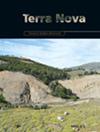卢西塔尼亚盆地中生代碎屑锆石年龄特征及其对伊比利亚-纽芬兰共轭边缘演化的影响
IF 1.7
3区 地球科学
Q2 GEOSCIENCES, MULTIDISCIPLINARY
引用次数: 0
摘要
鲁西塔尼亚盆地的新碎屑锆石年龄结果与伊比利亚西部和加拿大东部中生代的已发表数据(4959个一致年龄)相结合。新样本中的锆石主要是泥盆纪-二叠纪、成冰纪-埃迪卡拉纪,或者揭示了这两个年龄群体的组合,显示出中元古代-太古代的次要年龄。应用于汇编的年龄数据的统计工具允许根据年龄特征对样本进行分组,并解释年龄谱的主要特征。年龄特征由锆石的丰度决定:(1)从参与盘古拼合的地体中回收;(2) 与阿卡迪亚-华力西期结晶岩有关(~420-310 Ma),从造山带的劳伦期到冈瓦纳大陆侧变得更年轻;(3) 与碰撞后事件有关(约300–285 Ma),影响了不同的地体,并在控制盆地形成的主要构造中被挖掘出来;和(4)中生代岩浆作用(~145 马),在西大西洋边缘留下了更强的印记。本文章由计算机程序翻译,如有差异,请以英文原文为准。
Detrital zircon age signatures of the Mesozoic in the Lusitanian Basin and implications for the evolution of Iberia–Newfoundland conjugate margins
New detrital zircon age results from the Lusitanian Basin are integrated with published data for the Mesozoic of west Iberia and eastern Canada (4959 concordant ages). Zircons in new samples are either mainly Devonian‐Permian, Cryogenian‐Ediacaran or reveal a combination of these two age populations, showing secondary to minor Mesoproterozoic‐Archean ages. Statistical tools applied to the compiled age data allow grouping the samples according to age signatures and explain main features of the age spectra. Age signatures are determined by the abundance of zircon: (1) recycled from terranes involved in Pangea amalgamation; (2) associated with Acadian‐Variscan crystalline rocks (~420–310 Ma), which becomes younger from the Laurentian to the Gondwanan sides of the orogen; (3) associated with post‐collisional events (~300–285 Ma) that affected different terranes and were exhumed in major structures controlling basin formation; and (4) resulting from Mesozoic magmatism (~145 Ma) with a stronger imprint in the west Atlantic margin.
求助全文
通过发布文献求助,成功后即可免费获取论文全文。
去求助
来源期刊

Terra Nova
地学-地球科学综合
CiteScore
4.80
自引率
8.30%
发文量
59
审稿时长
2.3 months
期刊介绍:
Terra Nova publishes short, innovative and provocative papers of interest to a wide readership and covering the broadest spectrum of the Solid Earth and Planetary Sciences. Terra Nova encompasses geology, geophysics and geochemistry, and extends to the fluid envelopes (atmosphere, ocean, environment) whenever coupling with the Solid Earth is involved.
 求助内容:
求助内容: 应助结果提醒方式:
应助结果提醒方式:


